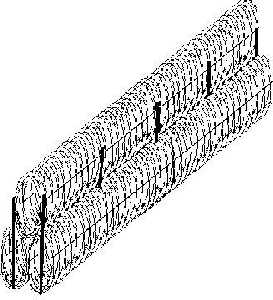
In the military science of fortification, wire obstacles are defensive obstacles made from barbed wire, barbed tape or concertina wire. They are designed to disrupt or delay an attacking enemy. Depending on the requirements and available resources, wire obstacles may range from a simple barbed wire fence in front of a defensive position, to elaborate patterns of fences, concertinas, 'dragon's teeth' and minefields hundreds of metres thick.
One example is the 'low wire entanglement', which consists of irregularly placed stakes that have been driven into the ground with only some 15 cm (six inches) showing; the barbed wire is then wrapped and tightened on to these. An enemy combatant running through the barrier, which is hard to see, is apt to trip and get caught.
Wire obstacles first saw significant military use during the Second Boer War, and reached their pinnacle during World War I. Relatively elaborate obstacles were also used in some phases of the Korean War, and continue to be used on the Korean Demilitarized Zone, and a few other borders. However the more fluid nature of modern war means that most obstacles used today are relatively simple, temporary barriers.
Tanks can generally flatten unmined wire obstacles, although some are designed to stop vehicles, and the heavier obstacles can sometimes stop light armoured vehicles. Wire obstacles can also be breached by intense artillery shelling or Bangalore torpedoes.